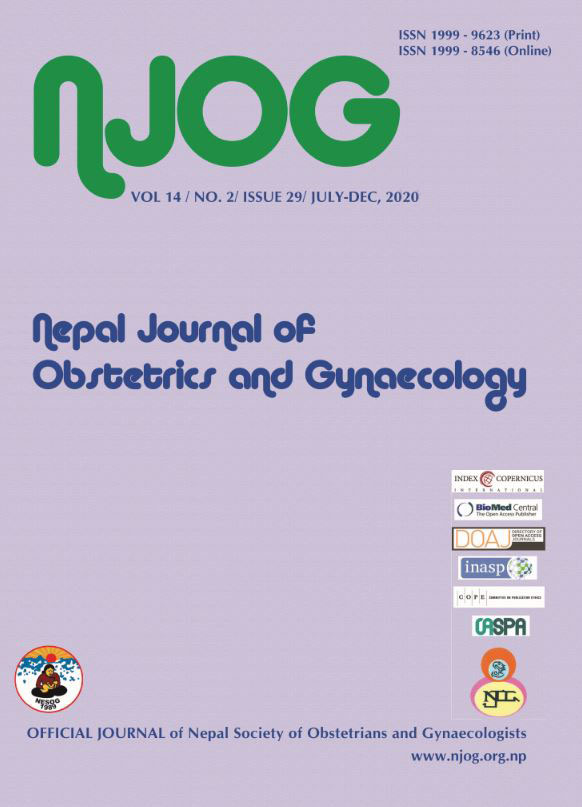Analysis of Gynecological malignancy in surgical specimens during Covid-19 pandemic
Abstract
Aims: To determine the pattern of female genital tract malignancies in a teaching hospital in eastern Nepal.
Methods: This is a retrospective cross sectional study performed in the Department of Pathology at Nobel Medical College, Biratnagar, Nepal. This study was conducted over a period of 4 months during Covid-19 pandemic from June 2020 to September 2020. The records of the pathology department were analyzed.
Results: A total of 600 specimens were received in the Pathology Department out of which 224 (37.3%) were gynecology samples. Total number of gynecology malignancy was 14 (2.3%). The most common was cervical carcinoma (57%) followed by ovarian malignancy. More than 70% fell in 40-60 years age group.
Conclusions: In conclusion, in this cross sectional study we found more cervical cancer than other gynaecological malignancies which was followed by cancers of ovary. Most of the patients were in the 41-50 years age group. Tumor imprint cytology could be an option in place of frozen section in resource constraint setting. Effective screening test for cervical cancer would help prevent invasive cervical cancer and its morbidity.
Keywords: gynecological malignancy, high grade neoplasia, squamous cell carcinoma
Downloads
Downloads
Published
How to Cite
Issue
Section
License

This work is licensed under a Creative Commons Attribution-NonCommercial 4.0 International License.
Copyright on any research article in the Nepal Journal of Obstetrics and Gynaecology is retained by the author(s).
The authors grant the Nepal Journal of Obstetrics and Gynaecology a license to publish the article and identify itself as the original publisher.
Articles in the Nepal Journal of Obstetrics and Gynaecology are Open Access articles published under the Creative Commons CC BY-NC License (https://creativecommons.org/licenses/by-nc/4.0/)
This license permits use, distribution and reproduction in any medium, provided the original work is properly cited, and it is not used for commercial purposes.



